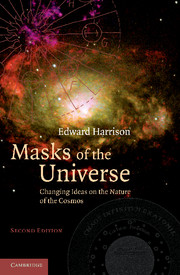14 - The Witch Universe
Published online by Cambridge University Press: 27 October 2009
Summary
Francis Bacon, English courtier and statesman of the late sixteenth and early seventeenth centuries, promoted a philosophy of empirical science and declared, “let every student of nature take this as his rule: that whatever the mind seizes upon with particular satisfaction is to be held in suspicion.” His strong belief in empirical methods of inquiry assured him that witches existed.
Let us look at the witch universe in which this incredulous and illustrious man lived.
Tracing the development of ideas in the long Middle Ages leads the student into a bewildering labyrinth of astonishing beliefs. The works of Jabir ibn Haiyan, court physician in the eighth century to Harun al-Rashid (the caliph of Baghdad famed in The Thousand and One Nights), became widely known for their medical lore and learned alchemy. Jabir was later latinized into Geber, and because of the rigmarole and obfuscation of the numerous works attributed to him, the word Geberish became eventually gibberish.
In the Middle Ages the telluric elements of earth, water, air, and fire exhibited respectively the qualities of cold, wet, dry, and hot. By erudite argumentation the elements accounted for bodily humors of melancholy, phlegm, choler, and blood, which in a marvelous manner corresponded with the characteristics of creation, fall, redemption, and judgment. Acts of the will were governed by God, acts of the intellect by angels, and acts of the body by the celestial orbs. Each person possessed a daemon or genius who acted as a guiding spirit.
- Type
- Chapter
- Information
- Masks of the UniverseChanging Ideas on the Nature of the Cosmos, pp. 235 - 248Publisher: Cambridge University PressPrint publication year: 2003

